Passion! Hardwork! Endurance! These are words that can summarise the interesting tale about the life of the prolific Portharcourt based painter, SEGUN AIYESAN. Wrap yourself in this delightful adventure where an unusual mixture of the sciences and the arts produces creativity like never before! Artsy Moment’s Grace Ukot, gets up close and personal with Segun as he shares with us about the power of his passion.
Can you describe your childhood experience? What was growing up like?
I picked an interest in art when I was very young. I saw a couple of comic strips that were very interesting, and I was drawn in. I can remember there was a school mate of mine; he was a year or two ahead of me in primary school. The guy was drawing from a comic strip and he was drawing so well, and I was like ‘wow this is good!’ ‘Maybe I can try this, maybe I can be as good as this guy!’ that was how I started drawing. I didn’t get lots of encouragement from my parents, but I had very strong passion towards the arts, so it didn’t really matter. When I was in primary school, there was a store at Oluyole in Ibadan, it was like a supermarket, I used to go there and go through their comics even though I couldn’t buy them. Fortunately, one of my neighbours was a staff of the store so they didn’t bother me.
My secondary school was in Lagos. In my Form 2, I ran into these two guys and I saw that they liked art, and they had lots of comics, so I got friendly with them. We used to draw together, compare, compete…we had this constructive competition going on. It was constructive because we were getting better by competing with each other! I got to find out that they had gotten into the ‘comics thing’ more elaborately than me. They had rich parents that provided more money for them, so they had lots of comics! My parents didn’t see anything… in fact at some point; they felt I was wasting my time. When I was in primary school, they didn’t mind too much because that was primary school, but this was secondary school, and I was still spending too much time drawing. You know, nobody wanted their child to become an artist. But I wasn’t drawing because I wanted to become an artist, it was just what I loved doing. Truth be told, it was affecting my studies. I spent too much time drawing and I didn’t pay attention to my studies. My results were so inconsistent.
Getting into form 4, my two friends were getting better grades than me, and they were allowed to do science. We were supposed to get a certain mark in mathematics for us to be able to do science, and I didn’t make the mark. At that point, I realised that I was in deep trouble because I didn’t have any love for commercial subjects. So I told my dad that I would quit school if I had to go to art or commercial class. Somehow, my father was able to get the school authority to allow me do science in form 4 in spite of my terrible score in mathematics. It was time to make a change! A BIG change! So what I did, which was probably one of the best things I ever did, was to construct a timetable whereby I could allocate time to both my studies and my art. I remembered drawing the timetable on my wall in my bedroom back then in Lagos. I sat and pondered over it, and allocated time for every subject, and art had a prominent time. The timetable worked magic! I passed all my subjects, and it was all due to my timetable which was all due to my art!

So did you use wet paint on the wall? Or did you draw with markers?
I used markers to draw the very large timetable that I could see from any angle. I was faithful to the timetable. It worked very well because at this time I had a structure. Of course in my form 5 I drew a better timetable! It also helped me to a great degree because my result was one of the best 2 results in the school. I finished with 7 distinctions. Like I said, it was all due to the timetable which was all due to the art. So nobody could talk me out of the art. All these while, I never saw myself as wanting to practice art as a professional. Back then, I was so passionate about it to the extent that when my parents gave me money for transportation to school, I would walk the long distance to school (about 3 kilometres) and save the money to buy comics.
What schools did you attend?
The name of my primary school was Omolewa Nursery and Primary school Yenetu, Ibadan. My secondary school was Ojo High school, Lagos. I went to Obafemi Awolowo University, Ife.
So that is where you studied engineering finally!
Yes! I was happy to do engineering; I was very good in mathematics. When I was in the University, I didn’t relent in my pursuit of definition in the arts. I went to the Fine Arts department so often that many of them started thinking that I was a fine art student. I had lots of them as friends. I had very big drawing books, and every day I had to draw something it made the day complete. I would even write the dates, just to account for that day. Any day that I didn’t draw, I wouldn’t be happy. I pretty much developed myself in the arts without a particular purpose to practice professionally.
How did you launch into your painting career?
When I left the University, I was sent to Portharcourt for NYSC and I got a job with Chevron Nigeria Limited. I was offshore most of the time, and I found out that there wasn’t a lot to do offshore, so I spent my time sketching. One of my friends saw some of my drawings, and he was really fascinated. His sister just got married and he was looking for someone to draw. I told him that I wasn’t a professional but he felt I could do it because of the things he was seeing. I told him that I didn’t have the requisite materials to make what he wanted, and he said that he was willing to give me money to buy the materials. He did that and I painted a portrait for him.
So with the rest of the materials, I started killing time by painting on the platform. Some of the expatriates noticed and they wanted to buy them. I wasn’t used to selling my things, but I couldn’t resist the cash. Even the helicopter pilot that used to take us to the platform commissioned me to do a lot of things. Then my superintendent at the office also found out that I could do some great paintings, and he also commissioned work for me. After the service year, I had so many people coming to me to make paintings.

Gradually, I got sucked in, and I started hanging out with professional artists exhibiting with them. At this point I felt that this wasn’t what I wanted because the impression I had of artists is that they are always broke, but I just couldn’t stop, I kept getting drawn into it, and then one day, I did an exhibition and then a guy came by and saw it, and he was really impressed. He said that he would like to hook me up with someone who would be able to help me showcase my works properly. He hooked me up with a white lady whose husband was working in Total. She started displaying my works at Total exhibitions. My resistance started becoming thinner and thinner! I had enough money to buy myself a Honda Accord. One day I went home and my dad saw my car, he asked: ‘where did you get this car from?’ and I said: ‘from my art’. That was when he realised that I had a job.
Total decided to select some artist from Nigeria to send to Paris for an exhibition. I was selected along with a couple of other artists. The exhibition was a very good show, all my works were sold and I came back to Nigeria and decided that if I want to keep this as a profession, then I have to strategise, build a structure and make a plan. I decided that I was going to have a studio separate from my house. So I rented a 2-bedroom flat for my studio. I decided that I would be leaving the house at 7am just like every other worker. This gave me the feeling of a regular job. That way, I was able to take my work serious. It became a hobby, a passion and a job!
So do you have a day job presently? Or is painting your only source of income?
Well, I have never worked for anybody. I have never done anything else other than painting, and by God’s grace I could say I am successful because I have my own personal studio which is a storey building, and all I do there is just painting.
Do you have workers or people whom you mentor?
I’m not just a mentor, I have employees. Right now I have two employees. I have an employee that is at the gallery, and I have another employee at the studio. The employee at the gallery just attends to people when they come to look at my works. Once I do my works, they go to the gallery, but the bulk of my business is done from the studio.
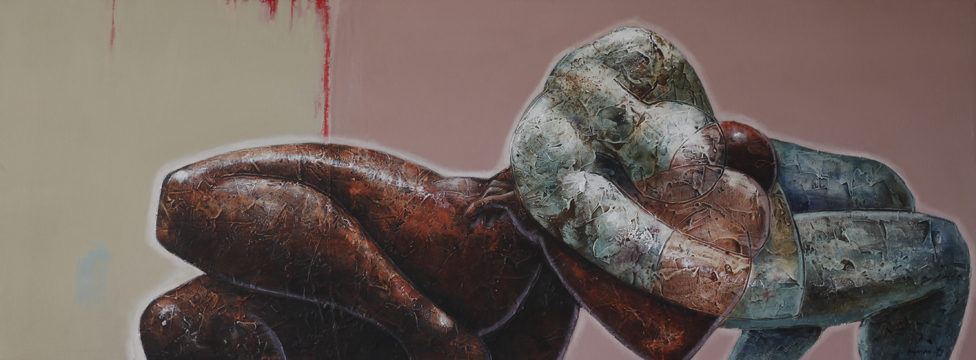
For how long have you been painting?
Well if you ask me how long I’ve been painting professionally, I would say since 1998…between 1997 and 1998. That is when I really began to commit myself to it.
How would you define the words ‘Fine Art’?
Fine art is difficult to define because fine art is so broad. It goes beyond the act of putting pencil or paint on canvas. I’m trying to describe fine art from the way I see it. For me like I said earlier, fine art was like my life. I see everything in terms of art, so it’s not difficult for me to get inspiration because everything is an inspiration to me. God himself was an artist. All you need to do is just look around, and you’ll see the artistry of God! The way He just balances colours, the way He balances structure, all of these things are in nature, all we do is just discover them and try to use them in our own little way. Even acting, writing…are forms of art. It is the method you use to express your emotion. In our own case, we express our emotions through the visual sense because our works are not like dancing or acting. We painters express ourselves through what you see. You see them and you are probably affected by them. So fine art is a bit complicated. The way we see art in Nigeria is boxed. Art can also be an arrangement of objects. It doesn’t necessarily have to be a painting on canvas. It could be maybe the way you choose to arrange your house. There are artists that do what we call ‘installation art’. They arrange things deliberately to evoke certain emotions from the viewers. I can actually write a volume from just defining fine art.
Tell me how you would describe your own type of art.
Let me tell you what some artists have said about me. Some great artists have said that they are not sure of where I am going, all they know is that I am moving and that the movement looks good, but they cannot get themselves bothered with trying to define where the movement is going. All they are left with is just to enjoy the movement as it goes. Why they say such a thing is because it is difficult to describe my art. My art evolves very quickly. For someone who doesn’t know my works, if you see two different works that I’ve done, you’ll probably think that they were done by two different people. The basic thing that keeps me going is the fact that I can change my technique, my subject, and my interest quickly. When I’m thinking in a certain manner for a while, I get bored and I don’t get excited anymore, so I do lots of internal creation and I try to come up with new ways of expressing myself all the time. The search is what drives me. I don’t know what I am searching for, but I know that I can’t be caught standing in one place.
Each time I make a painting. I try to make it the best it could be at that point in time because one of my ideologies is that if you make a painting that you are not proud of, it is best for you to leave it in the studio because that painting is representing you wherever it goes. So even though I said that I try to evolve my style quickly, I try to make it the best it could be at that point in time. I don’t try to perpetuate any style. I think a style is an inherent thing. It is a collection of your experiences. There’s a misconstrued impression that what you paint is your style. I mean, you have someone painting birds, all he does is painting birds, and someone comes and says that his style is painting birds; or someone paints a landscape, and you say ‘that’s his style!’ if the person starts painting an abstract, then someone says ‘oh! He has changed his style!’ It is a misconception because style cannot be changed. What the artist does is to change his subject. His style still goes with it. My style is who I am, I cannot change it; and my style says that I should explore. I am a very experimental artist.
Do you have anybody that you look up to in the industry?
When I was in University, I read a lot of art books. I was particularly draw to one artist called Jean-Baptiste-Camille Corot. I was drawn to the guy because his works were very dynamic and realistic they were not frozen like works of some of the past masters. The guy said one thing that would haunt me for a long time. He said ‘to be a great artist, you have to do nothing but art’. Imagine myself back then in the University, I felt I could do my Engineering and also do Art for the love of it because I was really good in the University, but here was this guy saying that to be a great artist, I had to do nothing else but art. So I wondered that ‘does it mean that I am not going to be a great artist?’ But it ended up like Jean-Baptiste-Camille Corot said, right now, I am doing nothing but art! So Jean-Baptiste-Camille Corot influenced my work.
In Nigeria, there weren’t many artists that I committed my time to following. In my younger days, I saw works from Kolade Oshinowo, Abiodun Olaku, and I kind of got encouraged; but it wasn’t as if I was looking up to them because I spent more time studying from books, so I aspired to be as great as the artists that were in the books. I developed my art from studying works of a lot of masters.
Do you feel that being an artist is synonymous with a lot of money?
No! It is the opposite. Frankly speaking, in the society we live in we are still at the bottom rung of Abraham Maslow’s Pyramid of Needs. Most of us are still struggling to feed ourselves, so indulging in art is a bit excessive for the society that we live in. I mean you won’t expect someone who just managed to pay his child’s school fees to buy an artwork that is worth one hundred thousand Naira. The society has other things that seem more tangible to them than art, so to a large extent, most artist struggle, but what I tell artists is that there is no money in art, but then you can make lots of money. If you venture into the arts with the intention of making money, you’ll make nothing because your motivation is wrong. You can’t be inspired to do art because of money because there is no money there. In order to stand out as an artist, you need to be different and your drive needs to be different. There is no money in the arts, but all you can do to make it work is passion and endurance.
As an artist, do you belong to any associations?
I belong to one, but I am not a groupie. I am more of a soloist so to speak, but by formality, I am a member of the Society of Nigerian Artists.
So do you feel that Nigerian artists are being given the accolades that they deserve?
No. There is a small section of people that recognises and respects artists. I remember the first exhibition that I did in Paris sponsored by Total, a lot of white people were coming to me for autographs, and I was amazed. You see, over there, they celebrate artists, but in Nigeria it is not so. The artist would be doing himself a big disservice if he is going to wait for people to regard him before he starts regarding himself. I am proud to be an artist! A lot of people call me: ‘Engineer turned Artist!’ I tell them: ‘No! I am an artist who has an Engineering degree!’ The Engineering didn’t come before the Art. The Art has always been there.
Was the Total exhibition that took place in Paris your first exhibition or your first international exhibition?
It was my first international exhibition. Prior to that time, I had done so many exhibitions. In Portharcourt, I had done exhibitions with Shell, Elf… I had even gone to Bonny Island to do an exhibition with NLNG, you know…all kinds, but Paris was my first international exhibition.

Earlier on, you mentioned passion and endurance as qualities that an artist must possess. Are there other characteristics that a good fine artist must have?
Well, I can only mention things that have worked for me because a lot of people get by with attitudes that are different from all of these, but one other thing that I try to be is honest because honesty also shows in your work, and once people see that, it is easier for them to relate to your work. There has to be honesty in your expression. One other thing that works for me is this: when I come across a client that I sense has a passionate desire to own my work, I don’t make the price an issue for such a person. I’m not trying to be cheap, but I make it as easy as possible for the person to be able to possess my work once I realise that the person has a genuine passion; because usually, through such people a lot of other relationships could be formed.
Which of your artworks would you describe as the most challenging?
Do you know how many works I have painted? I am extremely prolific; I’ve sold 600 art works to Hotel Presidential in Portharcourt. I’ve sold 400 paintings to Juanita Hotel. I think I have probably done about 5,000 paintings. Right now I can easily paint 10-15 works a month. Some paintings take a short while, there are some I don’t have to think a lot about and I can execute it in one hour some paintings take two weeks or more.
What is the longest time you have spent doing a painting?
What if I tell you five years? You see the thing is that sometimes I may do a work and get tired of it, so I leave it, and I may not get back to it for up to a year or more, so I can’t just say that a particular work took me a particular period of time to make because there were breaks in between. But generally, I have done very large paintings that took about a month of almost every day working.
Let’s get a bit personal! You obviously spend a lot of your time painting. Does your wife share your passion?
Yes she does. She is not an artist, but she encourages me, and she is used to the life of an artist. I don’t dress corporately most of the time; I dress very casually except for Sundays. I kept a beard and my wife didn’t like it; I kept an afro and she didn’t like it, but she got used to it. I am not an extreme person. I am not crazy like people usually think artists are. I believe in God, I try to be a good guy (laughter).
How many children do you have?
I have four kids. Four boys! My kids are extremely active. There’s none that is quiet.
Is any child of yours walking in your footsteps?
They all love art. The last child is still little, but he is naturally going to follow his elder brothers. They are always drawing, they always ask me for papers to draw; they always bring their drawing to me. They are crazy about cartoon characters like Spiderman, Captain America, you know… and fortunately, I am able to provide them with materials. My ipad has a comic application where I buy comics. They go through the application to read all the comics. They are fascinated and hooked to it. So, whether they want to become artists, I won’t push it. I didn’t want to become an artist and I think it worked to my advantage because mine was driven by passion not because I wanted to make it into a profession later in life. So I’ll also want them to have the experience where they will have a choice.
With all the time that you put into your painting, how have you been able to manage your work and your family?
I’m used to having to balance a lot of things. I try my little best even though I think it is not adequate enough because I don’t take my children out as often as I would want to, but it is something that I am conscious of. Sometimes I deliberately just hang around to spend some time, but I spend most of my time in the studio because I always have to paint one thing or the other. So managing my family is definitely a region that needs to be addressed properly. The other time my wife and I had an argument over taking the kids for swimming. I told her that I had commissioned work that I had to meet up with, and she said that I have to cut down on work. I told her that ‘well, this is where the money comes, so we have to treat it with respect.’ Maybe one day I’ll have enough money to build a house and put a swimming pool in it.
Do you have any other hobbies apart from painting?
I read. I used to be an avid reader when I was younger. Those days I was painting, I was also reading a lot. I read a lot of novels back then. I tried to revisit it because I realised that all I was doing was painting.
Hmm… you love painting in your studio and reading… so would you describe yourself as an introvert?
I am a very weird person. Sometimes I wonder if I am crazy. Sometimes when I paint I talk to the art. I like loud music when I am working. It drowns out other sounds that would interfere with my thinking pattern. I wouldn’t consider myself to be an introvert, and I wouldn’t say I am an extrovert. So I guess I am somewhere in between. I probably have split personalities. In short, I think I have a couple of personalities.
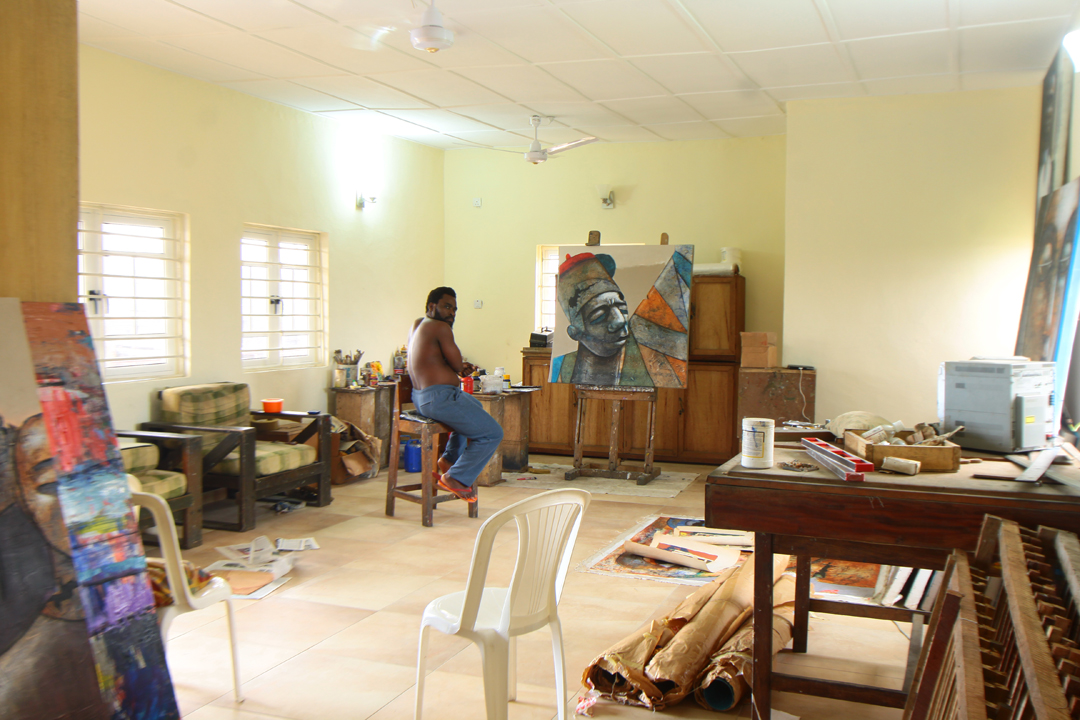
Where do you get your materials from? Is it easy to get them in Nigeria?
No it isn’t easy to get them here. Well, you can get some here, but for some of them I have to import. I had to create some because as an artist one thing one needs to realise is that you are a solution provider. A lot of solutions to my work were not found out there, so I had to find a way to create solutions to so many things. Recently there is a material that became unavailable in the market, and the company that used to buy it kept promising that it would come. Prior to that time, I had to create something that came close to replacing it. In fact it is probably better than it. I probably won’t invest so much in buying that material anymore since I have something that is readily available and will do the same job.
Where do you see your brand in the next five (5) years?
In five years, I hope my inspirations are better refined and my works are focused more on affecting the society positively to bring about our collective emancipation from the cyclic conundrum of meaninglessness. I want my art to be read like a book, a veritable marker in the search and expression of untamed truth. I hope to remain restless, albeit peaceful.
Thank you for taking time out of your busy schedule to grant Artsy Moments this interview! We wish you all the best!


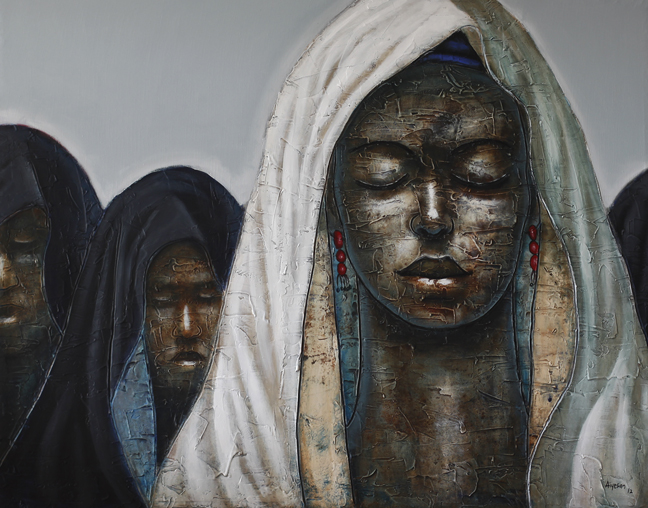
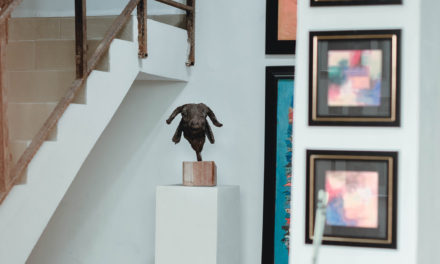
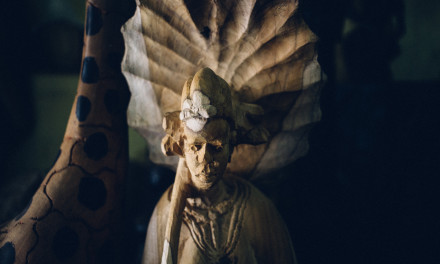

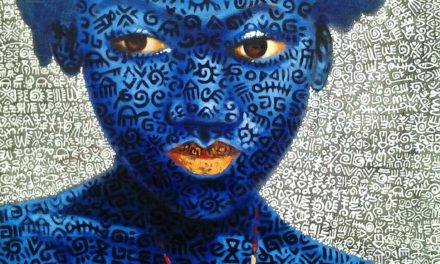

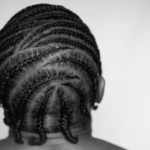

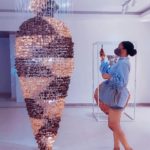


Awesome
Yes Koryarts! Really lovely art!
loved the article, loved the work of the artist too…really talented. keep up the good job
Thanks Zayzee
This is a lovely piece and i must say this goes a long way in encouraging people with talents and skills to ensure they stop at nothing to develop what they really love doing;no matter the educational background.Awesome!
great piece
I am the lucky owner of one of Segun’s early pictures from Port Harcourt painted around 1998. It hangs on the bedroom wall and is a vivid reminder of my days with Chevron in Escravos. Great artist and he has that work ethic that is essential to success for creative people. Best of luck to him